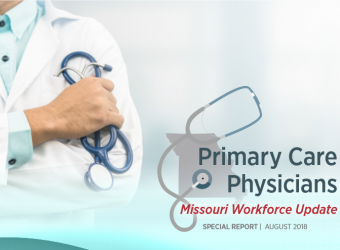
Primary care is the front line of health care delivery. A primary health care system with the capacity to ensure that individuals receive the care they need, manage chronic conditions and live healthy lives is essential to individual and community health.
Missouri’s primary care provider landscape has changed since 2014 (when this report was last published) with an increased number of physicians throughout the state — most significantly in rural Missouri. But, the shortages remain and will continue into the future, which will require diligent efforts to maintain and increase the supply.
An analysis by the American Association of Medical Colleges projects that overall physician demand will grow faster than supply, leading to a shortfall of between 42,600 and 121,300 physicians by 2030.1 A shortage of primary care physicians is projected to be between 14,800 and 49,300 by 2030. These assumptions are shaped by the supply of advanced practice registered nurses and physician assistants — their role in providing care, and trends in supply and demand. The U.S. Health Resources and Services Administration estimates that 13,800 PCPs are needed to remove the primary care shortage designation from all currently designated shortage areas.

